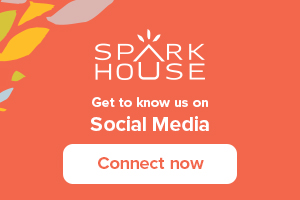Amid the COVID-19 pandemic, faith communities have been confronted by an age-old question: “Would the neighborhood notice if you closed your doors?” For many of us, we have shifted from gathering in person to worshipping online or in a hybrid fashion, and much of our ministry has been paused. We haven’t had the same opportunities to be present in the neighborhood that we may have taken for granted before.
Wrestling with this question and with the need for greater intentionality as we adjust to life with COVID provides us with a wonderful opportunity to reframe our approach to community engagement and to ministry as a whole. One way to step into this process of reframing is to practice asset mapping in our congregations and our surrounding community.
Asset mapping is the practice of intentionally learning about your community through the gifts and strengths of its members. It’s a form of discovery that highlights what is powerful, and beautiful, and diverse about the community to which you belong. Asset mapping helps us to see our communities as networks of giftedness instead of networks of need.
At its core, asset mapping is a practice of listening. The first step in any mapping project is identify some leaders in your community who are curious and attentive listeners. In many ways, these are the first assets you are mapping. In your congregation, think about the folks you know who are always asking good follow-up questions, or the people who intentionally seek out others before or after worship to talk. Invite these folks to bring those gifts to a season of listening in the neighborhood.
There are a number of ways you can put asset mapping to work in your community. One way is to work in a handful of best questions to ask folks who come to your church for some other purpose. Maybe you have a community meal or a food shelf. Maybe you host neighborhood association meetings. Whenever you find yourself having a conversation with someone who has come to your church, find a way to ask them the following questions:
- What are a few things you do well enough that you could teach someone else?
- What are some things you want to learn that you don’t know about now?
- Is there anyone else in the community whose gifts you really appreciate?
The first question identifies the person’s gifts. The second question helps you think about who to connect them with in the future. And the third question helps you to identify people for follow-up conversations.
A second way to practice asset mapping is to recruit a team of listeners to conduct a series of one-to-ones in the community, using the same questions as above. Gather some leaders together and brainstorm a list of community stakeholders and neighbors who you know of and invite each leader to connect with one or two of them. This process can be a little slower to begin with but can very quickly expand your network within the neighborhood and reveal a wealth of assets in your community.
Whatever strategy you decide on, bring a spirit of curiosity and humility to your conversations, and begin to see your neighborhood as a network of gifts and strengths. The beauty is that God is already active in our communities, in and through our neighbors. We have been set free to participate in this holy community, bringing our own gifts and strengths to share. Thanks be to God!



